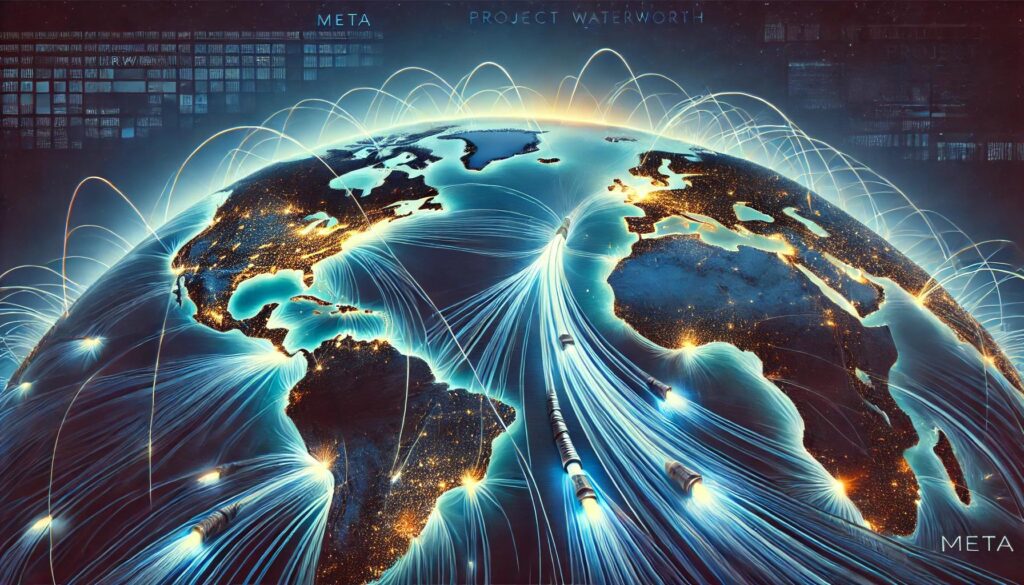In a groundbreaking move to enhance global digital infrastructure, Meta, the parent company of Facebook, Instagram, and WhatsApp, has unveiled Project Waterworth. This ambitious initiative aims to construct the world’s longest undersea cable network, spanning over 50,000 kilometres—surpassing the Earth’s circumference. The project is set to connect key regions including the United States, India, Brazil, and South Africa, thereby bolstering connectivity across five continents.
The primary objective of Project Waterworth is to strengthen the world’s digital highways by introducing three new oceanic corridors equipped with high-speed, high-capacity connectivity. This infrastructure is deemed essential for the proliferation of artificial intelligence (AI) technologies globally. Subsea cables like these are the backbone of international data transfer, handling over 95% of intercontinental traffic and enabling services ranging from communication to online transactions.

Meta’s investment in this multi-billion-dollar, multi-year project underscores its commitment to expanding global connectivity. The company has a history of infrastructure innovation, having developed more than 20 subsea cables over the past decade. Notably, Project Waterworth will employ a 24-fibre pair system, significantly enhancing data capacity compared to standard systems that utilise 8 to 16 fibre pairs. This increased capacity is crucial for supporting Meta’s growing AI projects and the world’s escalating digital demands.
In a recent blog post, Meta stated: “Project Waterworth will bring industry-leading connectivity to the U.S., India, Brazil, South Africa, and other key regions. This project will enable greater economic cooperation, facilitate digital inclusion, and open opportunities for technological development in these regions.”

The project is poised to have a significant impact on India’s digital landscape. By providing enhanced connectivity, Project Waterworth aims to accelerate India’s digital infrastructure growth, supporting the country’s ambitious plans for its digital economy. This development is expected to foster economic cooperation and technological advancement, further integrating India into the global digital ecosystem.
Security and resilience are paramount in the construction of this extensive undersea network. Meta plans to lay the cable system up to 7,000 meters deep and employ enhanced burial techniques in high-risk areas, such as shallow coastal waters, to mitigate potential damage from ship anchors and other hazards. This approach aims to ensure the durability and reliability of the cable, safeguarding the vast amounts of data it will transmit.
The announcement of Project Waterworth comes at a time when the security of undersea infrastructure is under increased scrutiny. With over 95% of the world’s internet traffic relying on such cables, their vulnerability has become a focal point for governments and organisations worldwide. Meta’s proactive measures in reinforcing the physical security of the cable reflect a broader industry trend towards safeguarding critical digital infrastructure.
In summary, Project Waterworth represents a monumental step forward in global connectivity. By constructing the world’s longest and highest-capacity undersea cable, Meta is not only addressing current digital demands but also future-proofing the infrastructure necessary for the continued evolution of AI and other emerging technologies. This initiative is poised to reshape the digital landscape, fostering greater inclusion and economic growth across multiple continents.

